Growing basil at home, you can provide yourself and members of your family year-round spiced greenery. In addition to excellent taste, seasoning has a number of valuable beneficial properties for the human body.
But to get the desired harvest, it is important to know how to put basil and what conditions to observe with the room growing of this culture. After all, basil is a rather demanding plant, especially for warmth, light and moisture.
To minimize errors when landing and caring for a basil at home, - rational first to study the material below.
Photo Collection and video master class will help to better perceive outlined information.
Basil at home, plant description
Basil is a popularity of annual or perennial herbaceous plants of the family of Clanotkov. Basil shrub shapes are also found.
- In the natural medium, the basil grows in tropical and moderate climatic zones. Roda fragrant grass is considered Africa.
- Popular food spice, basil, also known as Reikhon, Reikhan, Reggan, Rean or fragrant Vasilek.
- The root of the basil is superficial, stem - straight, branched, densely fronted.
- The oblong gear leaves of the basil are covered with rare villings and can be painted in green or purple tones.

- Inspective small small flowers of white basil, light pink or purple color, collected colosed in inflorescence or brush.
- Basilica fruit - nuts. Seeds retains his germination for about 5 years.
- Externally, fragrant herbal spice resembles a small lush bush, 15-80 cm high, depending on the variety.
Useful properties of Basilica
- The main advantage of spiced grass is its pronounced fragrance due to the presence in the plant of complex essential oil.
- The plant includes a number of useful vitamins (C, PP, B2,), trace elements, carotene, phytoncides, provitamin A, rutin, etc. due to the complex of useful substances, the basil stimulates the work of the immune system, has a bactericidal, antipyretic, toning and antioxidant effect.
- Especially useful to use basil in food in viral, infectious and respiratory diseases.
- In addition to therapeutic effects, the basil has a general strengthening effect on the body, improves memory, stimulates mental activity and strengthens the nervous system.
- The fragrant spice perfectly copes with the inflammatory processes of the oral cavity (caries, dental stone, stomatitis), neutralizes the unpleasant smell of mouth.
- The use of basilica to people suffering from meteorism or gastrointestinal diseases is shown.
- Basil is widely used, as seasonings for improving taste. Violet Basil varieties are considered the most fragrant. They are especially popular in the Caucasus and in Asia. Green varieties are more in demand in European and Mediterranean cuisine.
- Basil has both contraindications. So, it is not recommended to abuse this spinning to people with cardiovascular diseases, diabetes, thrombophlebitis and vegetative dystonia.
Types and varieties of basil
In culture there are a huge amount of various varieties of basilica, differing in smell, color, appearance of the bush and the timing of ripening.
The most popular types of basilics are considered:
- Camphor (fragrant).
- Purple (ordinary).
- Zelenoliste.
- Mexican (brown).
- Spoonful (salat colostal).
- Large.
- Melo-collar.
- Puchkova.
- Lemon (Thai).
For the cultivation of the basil at home, it is better to choose the melligent lowered varieties of basil, forming not high (up to 0.5 m) compact bushes.
Consider the most common and sought-after varieties of this series:
- Marquis is a medium grade, reaches a height of no more than 25 cm. Bands are compact, spherical shape. Green leaves have a bright carnation - a pepper aroma.
- Vasilisk is a ray-ray low grade, not more than 20-25 cm high. It has a pronounced list-clove fragrance.
- Dwarf - grows no more than 10-18 cm in height, it happens with green or purple leaves. It is considered a popular spicy greenery. He is used both in food and as decorative grass.
- The troll is a mellite green - purple variety, it grows up to 40 cm. The yield variety is resistant to temperature drops.
- The clove is the average grade, characterized by an unusual clove - anise odor.
- SPICY GLOBE - forms spreadable low bushes with small spicy flavor leaves.
- The philosopher is a low violet variety, with a pronounced clove aroma.
- Bush Minette is a miniature bush grade, great for growing in a pot.
- Cinnamon - forms small bushes, has a smell of cinnamon.
- Balconystar-low grade with small-skilled leaves of high taste qualities. Great grows in pots on the windowsill.
Of the majorly sheet representatives of the Basilica, such varieties are most famous:
- Characterized by medium sizes of the bush and large light green leisure leaves. High productivity and average maturation dates.
- Yerevan - productive clove - the list of varieties. The leaves are medium sized, purple.
- Genoa - yielding variety, with large, dark green aromatic leaves. Spicy aroma complemented by subtle hints of mint.

If the choice varieties of basil on the desired flavor, should pay attention to the following varieties of basil:
- Lemon, lemon flavor, freshness - have a distinct aroma of lemon.
- Lemon miracle - a variety with lemon - mint notes.
- Velvet, Gourmet mint - variety, stand out bright menthol taste and smell.
- Pet, Malachite and Caramel - unusual for basil varieties with caramel aftertaste.
- Karakum, Cinnamon, Cinnamon - have the aroma of cinnamon.
- Robin Bobin, Delight, Red Ruby, Robin Hood - outstanding representatives of clove basil varieties.
- Garnet nutmeg, Gigolo, Dreamer - varieties with nutmeg - peppery odor and taste notes.
Basil, especially planting at home
Planting basil in a pot of room one can have fresh herbs all year round. Consider all the features and conditions of cultivation of basil at home. Compliance with key rules of planting herbs provide a 100% positive result.
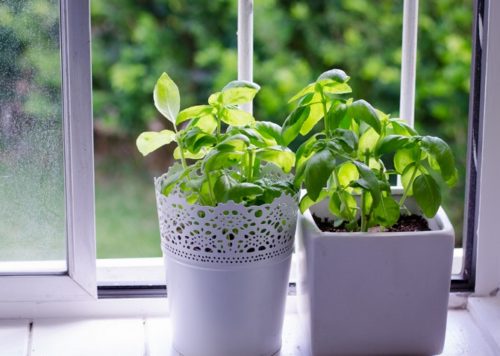
Terms planting basil at home
- Before planting or sowing basil, it is important to take care of high-quality soil for plants. Basil prefers a light, sandy loam, loose and fertile soil. If the soil was poor, you can remedy the situation by regular feeding of plants.
- Basil needs a systematic watering. It is important that the soil has good permeability to water and moisture does not stagnate. Stagnation or a surplus of moisture provokes rotting plants. Good circulation of water will provide lightweight structural good soil or drainage layer in the container or flowerpot. As a suitable drainage gravel, crushed stone or expanded clay.
- Soil composition can vary. Suitable ready-bought, potting soil or self-prepared substrate. To take it in equal amounts peat, humus (or compost) and garden soil. Gardeners - gardeners advised to take ground germinating basil, previously calcined it in the oven and securing thus its disinfection.
- Place for the cultivation of basil in the house thermophilic choose a sunny, warm, well-warmed, protected from drafts.
- Basil grown from seeds or cuttings (processes).
planting basil time at home
- Grow basil in a pot can be year-round. The main thing is to create the necessary conditions for the full development of the plant. The most optimal will be, of course, the springtime when the light day increases and becomes noticeable warmer. During this period, it will not be necessary to organize additional lighting and insulation of the plant. The sun rays become more intensive and warm through the window glass.
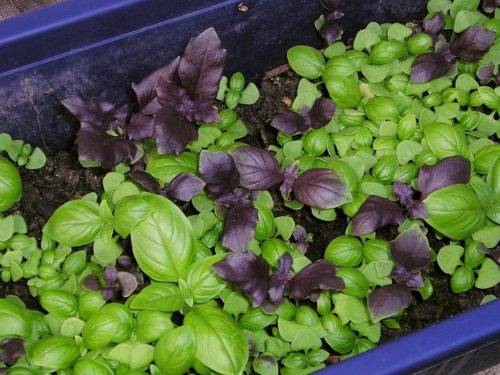
Landing Rules Basilica in Indoor Pot
- Basil can be grown immediately in the room pot (seeds or cuttings) or to transplant the plant from the garden (greenhouses).
- For the transplantation of plants in the pot, take a young, not bloomed Basil's busil and, while maintaining the natural self, put on the prepared flower pot.
- The plant is rapidly rooted and blooms. Experienced flowers are recommended to tear out flowers so that the bush is actively increasing the green mass.
- Given the well-developed root system of basil, vases or pots take volume and deep.
- If the room basil in the period of short light days will not be enough sunlight, you will have to organize additional lighting. And with a lack of heat - you can bite the pot into the film.

Reproduction and landing Basil for cuttings at home
- For breeding a basil with cuttings, young shoots or the tops of adult bubble busils are cut.
- The processes put in a capacity with water for germination by 1-1.5 weeks. The appearance of the roots indicates the readiness of the process of landing.
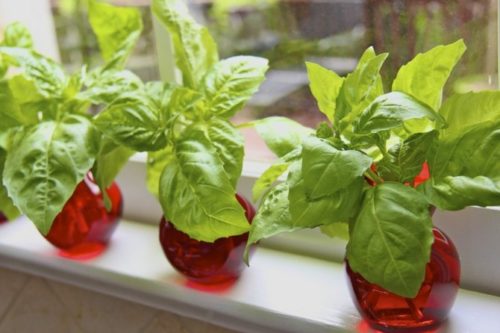
- Sometimes, practicing the rooting of the cuttings immediately into the soil substrate, without standing them in water. Then, planted cuttings from above are covered with cans or cut plastic bottles. Accelerate the survival rate watering the rooting stimulator.
- The cuttings lined in the ground are quickly rooted and after 2-3 weeks they are actively increasing the green mass, pleaseing the surrounding, fresh fragrant greens.
- Plants grown in this way will "serve" about 3-4 months. After flowering, the leaves, unfortunately, become not suitable and losing the fragrance.
Reproduction and landing basil seeds at home
- Sowing a basilica seeds are considered a longer process, but also more productive. Whereas the reproduction of the plant with subtle, delicate processes often has no positive result.
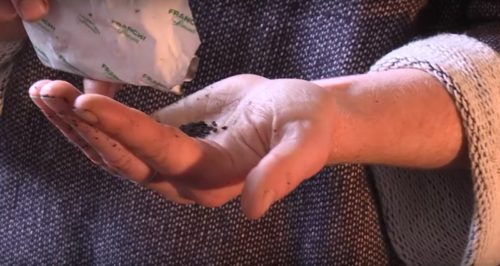
- The grown buses of the seed basil are completely formed only after 8-12 months. But, the life expectancy of such a plant will also be much longer.
- Salting basil seeds in containers or pots, it is important to pre-prepare soil and drainage.
- The bottom of the container is laid out a layer of drainage, about 2 cm thick. Then the soils (humid and peat in the ratio of 1: 2) are then falling asleep. Soil can additionally pour liquid mineral fertilizer.
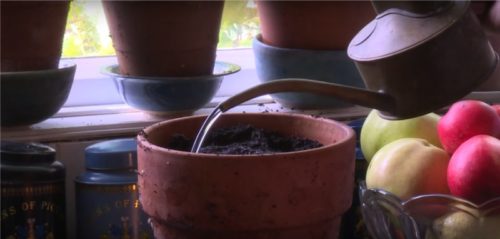
- Before sowing, seeds are soaked for 1-2 days in warm water and disinfected in the heatman's solution for 2 hours. Water should be changed every 10-12 hours.
- The seeds are placed on the aligned moistage soil and fall asleep with a small layer of soil (1-1.5 cm), not reaching the edge of the capacity at least 3-4 cm. The distance between the seeds should be about 3-5 cm. Thick shoots will need later To proper.
- The pot with seeds are covered with film until the first germination appears. Such a greenhouse effect stimulates faster germination of seeds. It is important not to forget to air the container (lifting the film) and moisturize the soil.
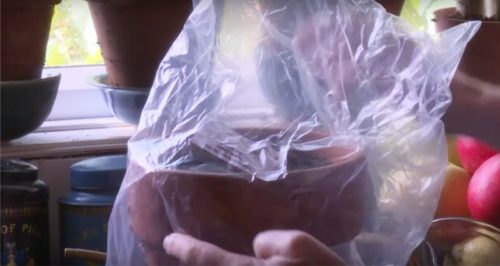
- Basil - a thermo-loving plant, so the room temperature should be at least +20 - 25 0WITH.
- In compliance with all conditions, the first sprouts will appear after 1.5 weeks. In this and subsequent period, it is important to ensure that the maximum favorable conditions are advised: heat, light, loosening, watering.

- When the Basil's Basilica is quite growing, you need to pinch its top so that it grudge into the width, and not height.

Basil at home, plant care
Landing and care Basilica requires patience and constant attention. After all, if the pot with a basil will turn out to be in draft - it will suspend in growth and "will" in will ", and if the ambient temperature is below +20 0C - the plant will start to lose a valuable spicy fragrance.
Winter period of growing spices also requires a special approach. Light day, less than 12 hours, will require additional artificial lighting for the basilica, otherwise the plant simply will not be able to actively develop.
Otherwise, care for the basil, includes familiar agrotechnical measures: watering, loosening, feeding, protection against diseases or pests.

Watering Basilica at home
Watering the plant is needed regularly, as the soil drying. Moderate humidity positively affects the growing green mass by the plant. The moisture is also undesirable, like drought. Watering is better to spend in the morning. Watering water should be estimated and warm. Together with watering, you can spray the busils from the sprayer or watering can be sprayed. After irrigation, the soil needs to loosen so that the crust is not formed.
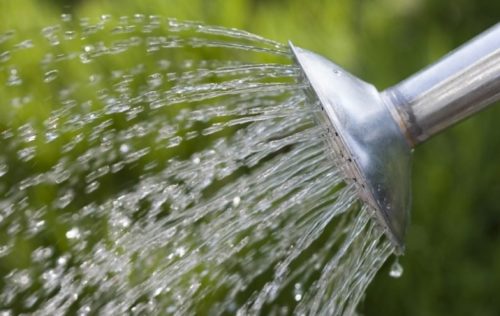
Support Basil at home
It is enough to make comprehensive fertilizers per month to stimulate the increment of basil foliage. The first feeders are carried out during the period of active vegetative growth of the plant, before the onset of flowering. For these purposes, a solution of nitroposki is used, at the rate of 2 tbsp. Fertilizers at 10-12 liters of water.
Diseases of room basilica
Basil is sufficiently stable, diseases, plant. In rare cases, culture may be affected by such fungal diseases like a black leg, fusariosis, gray rot.
Often, these diseases are a consequence of improper care of the basil: excessive and frequent watering, increased acidity and poor soil aeration, thickened planting.
The name of the disease "Black leg" completely reflects the signs of the disease, when the stem at the base of the drawing and the plant dies. To cope with the nuisance, Basil's bushyts are spilled by a manganese solution, the affected plants are removed along with a lore earth. At acute phase, it is not without fungicides (phytosporin, topaz, funds).
In case of disease, fusariasis, the stem is thinning and dark, the top of the plant is lying. Gray rot is manifested by the appearance of light brown spots on the leaves and other parts of the plant. For the treatment of these diseases, the basil is treated with the onion husk or, with an unsuccessful outcome, fungicides.
As for pests, the dangers for the basil grown in room conditions practically does not exist.

Basilica cleaning
To prolong the life of the Basilica and maintain all the flavors of the plant as much as possible, it is necessary to regularly overturn the color-colored Basilica shoots. This procedure, besides, stimulates the branch of the bush.
Proper formation of cooks also depends on the timely and regular addition of the top of the Basilica. The procedure is beginning to be carried out in the phase of the appearance of 4-6 real leaves and continue as the plant formation further.
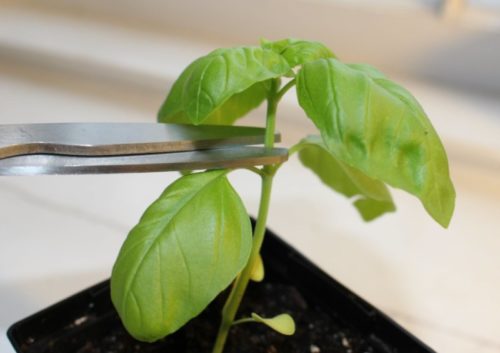
Basil leaves can be dried and smashed into powder so that it is convenient to apply seasoning for the preparation of different dishes. It is possible to collect a crop when the plant reaches at least 10-15 cm in height.
Tearing several leaves from the Basil's bush, you need to choose the oldest, side leaflets first. It is important to monitor that at least 4-lower leaves always remain on the plant, otherwise the basil will be pulled out, instead of bushing properly.
Thus, knowing how to properly plant a basil and how to competently care for the plant, there will be no difficulty in growing this valuable spiced culture.
The main thing is to remember that the light and the thermal-loving basil does not tolerate cold, drought and, on the contrary, moisture stagnation. Otherwise, requirements are similar to many other vegetable crops.
For those who first engage in the cultivation of basil at home, will be appropriate to view the photo, how grows and looks like a healthy, well-developed basil.

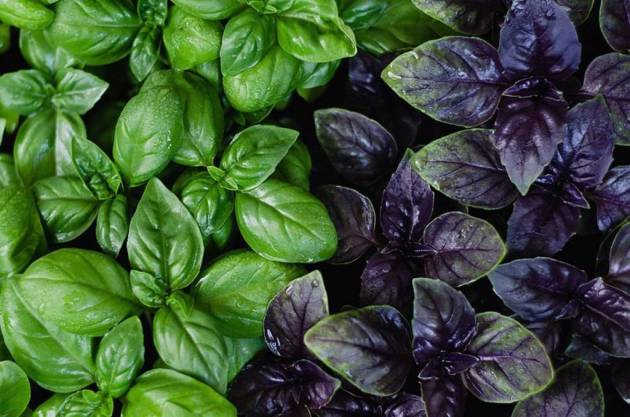
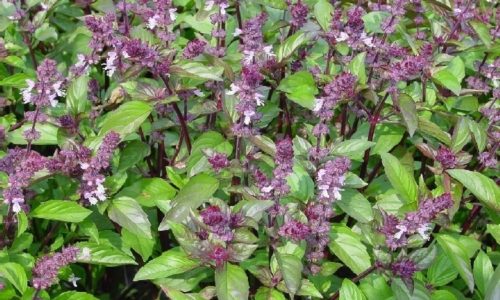

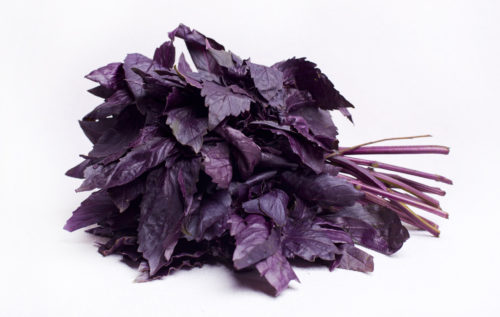

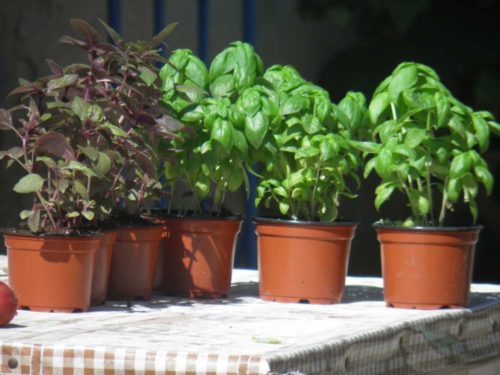



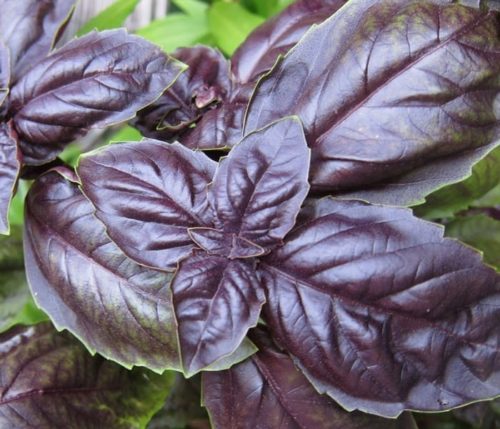
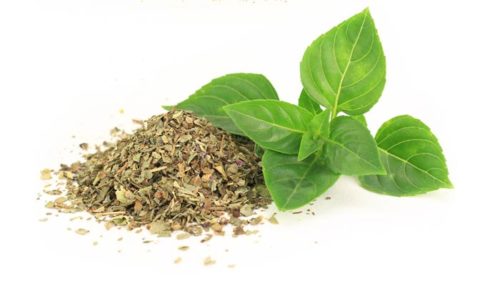

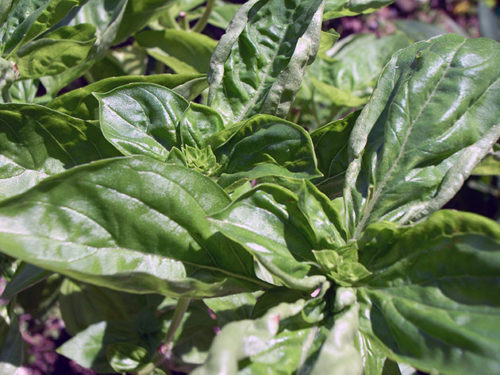

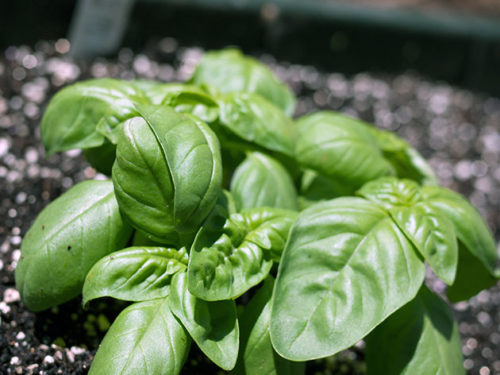
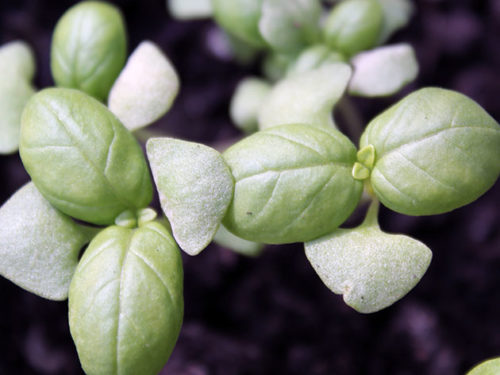













 Start a discussion ...
Start a discussion ...